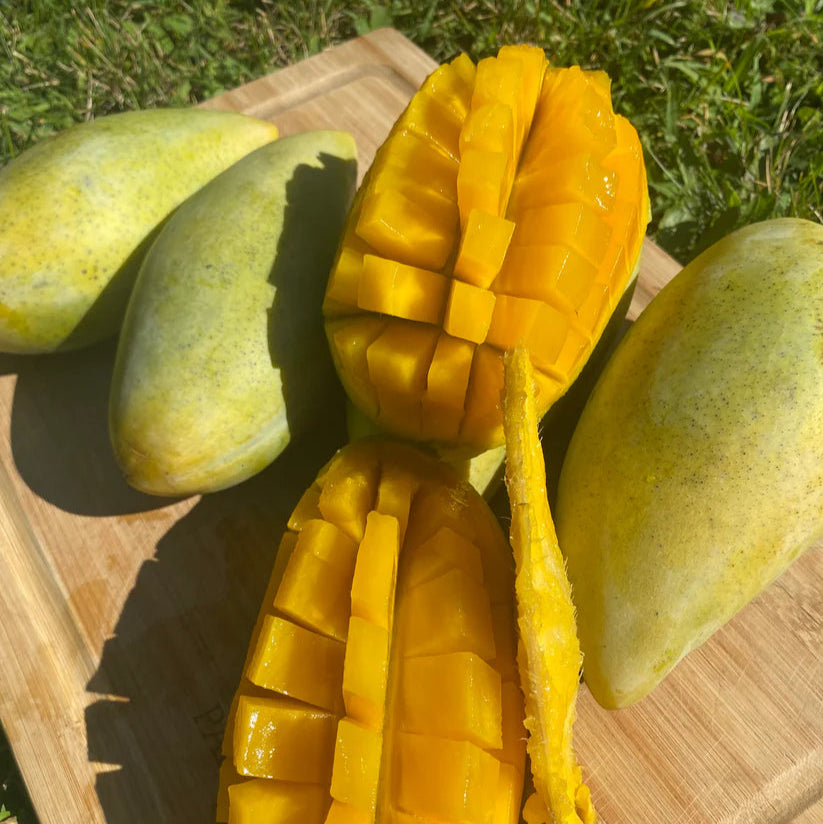Love it? Add to your wishlist
Your favorites, all in one place. Shop quickly and easily with the wishlist feature!
[message]
[title]
[message]



Veliyath Gardens
Couldn't load pickup availability
The Nam Dok Mai Mango is a celebrated variety originating from Thailand, renowned for its exceptional sweetness, delightful aroma, and smooth texture. Its name, meaning "Sweet Juice of a Flower," reflects its floral fragrance, which some compare to daffodils. Revered for its premium quality and exquisite taste, this mango has gained global popularity, being cultivated in regions such as Australia and Colombia.
The Nam Dok Mai Mango is not only a treat for the senses but also a treasure trove of nutrients.
The Nam Dok Mai Mango is prized for its unparalleled flavor and versatility in the kitchen.
Growing a Nam Dok Mai Mango tree is a rewarding endeavor for gardeners and farmers alike.
To enjoy the Nam Dok Mai Mango’s flavor and aroma for longer, proper storage is essential.
The Nam Dok Mai Mango is deeply rooted in Thai culture and traditions.
The Nam Dok Mai Mango tree plays a vital role in supporting local ecosystems:
The Nam Dok Mai Mango is more than just a fruit—it’s an experience that combines flavor, fragrance, and cultural heritage. Its sweet, floral aroma and creamy texture make it a sought-after variety worldwide, while its health benefits and culinary versatility ensure it has a place in every kitchen. Cultivating this mango tree brings beauty to your garden, supports local ecosystems, and allows you to savor one of nature’s finest creations. Make the Nam Dok Mai Mango a part of your life and enjoy its tropical charm every season.
Young trees need regular watering to establish deep roots.
Mature trees are moderately drought-tolerant but benefit from consistent watering during dry seasons.
Apply a balanced fertilizer containing nitrogen, phosphorus, and potassium.
Boosts Immunity: High levels of Vitamin C strengthen the immune system and combat infections.
Promotes Skin Health: Antioxidants like beta-carotene and Vitamin A improve skin texture and reduce signs of aging.
Supports Digestion: The fibre content enhances gut health and prevents constipation.
Symbol of Prosperity: Often gifted during festivals and special occasions as a symbol of abundance.
Culinary Heritage: A staple ingredient in traditional Thai desserts, showcasing its cultural importance.
Medicinal Uses: Leaves, bark, and unripe fruit are used in traditional remedies for various ailments.




